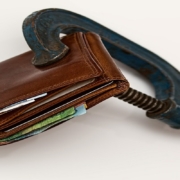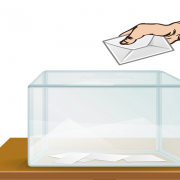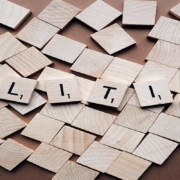Croatia and Slovenia: Two natural allies
Photo source: Pixabay.com
This may come as news to you, if you’ve only been exposed to the news of the border dispute between these two countries, or only happen to catch the comments of some politicians around the time of a domestic election campaign. There are unlikely to be neighbouring states anywhere on earth without open issues. The point is that whatever open issues exist between Croatia and Slovenia, they are far from deal-breaking in nature.
For a start, Croatia and Slovenia have shared histories within larger common entities and now as independent nations which are members of the European Union. In the 19th century incentives between Croatia and Slovenia were aligned. After the 1867 establishment of dualism between Austria and Hungary, major political parties amongst Croats and Slovenes sought tripartite rule, which is to say a common political entity within the Austro-Hungarian Empire for Southern Slavs. Even when differences appeared between the Korošec-led Slovenian Peoples’ Party and the Croatian Peasants’ Party (HSS) of Stjepan Radić in the 1920s there were no open issues between the two peoples while weariness of Italy also united them. Korošec was a conservative Catholic, while Radić was anti-clerical. That background enabled Korošec to compete for votes amongst the HSS supporters for whom religion was an important issue, which, unsurprisingly, elicited a response from Radić. In Yugoslavia, Croatia and Slovenia spent years after WWII resolving the questions of Istria and Trieste with Italy, cooperated on the construction of the nuclear power plant in Krško and were net contributors to the federal budget, all of which ensured they structurally had common ground on important issues. The political crisis in the 1980s saw Yugoslavia divided into two blocs with Croatia and Slovenia on the same side. Slovenian aspirations for greater autonomy and eventual independence perfectly matched Croatian goals. Over multiple jurisdictions and for at least a century and a half, Croatia and Slovenia have had far more in common and where they have competing goals and interests, the order of magnitude of these differences is much smaller than that required to preclude cooperation.
When the President of the European Parliament Antonio Tajani spoke in Bazovica/Basovizza (near Trieste) on the 9th of February of “Italian Istria and Dalmatia” at a commemoration of Italian victims in the wake of WWII, swift condemnation from across the political spectrum in both Croatia and Slovenia followed. The allusion to territorial pretensions and whiff of revisionism was more than enough to ensure a uniform response from both countries. In an EU where the British are leaving, which understandably means the remaining large nations hold greater sway over all policy issues, smaller nations, especially neighbours are likelier to find they have (even) more in common.
Croatia’s accession into the EU has increased scope for cross border cooperation
There are numerous examples of cross-border cooperation between Croatia and Slovenia. Since at least 2013 the two countries have been marketing their tourism industries in Asia and beyond together. The Civinet Slovenia-Croatia was established in 2013 to facilitate sustainable mobility planning and traffic management. Since 2014 the Ljubljana and Zagreb Stock Exchanges have held joint Investor Days. The EU’s Energy Union and related policies are seeing improved coordination between the two countries on electricity and pipeline connections whilst for the main motorway directions, only the motorway to Istria from the Slovenian side remains to be built. There was even a forestry management programme which ended last year between the two countries and Austria. In increasing areas there are examples of cooperation, especially since Croatia’s accession to the EU in 2013, which has opened up funding options to facilitate cooperation. For example, the Interreg V-A Croatia Slovenia programme has assigned EUR46mn from the European Regional Development Fund for the 2014-2020 period for cross-border cooperation. The point is that as two neighbours with shared pasts, it is no surprise that levels of cooperation are extensive. This is especially evident in the field of commerce and business.
Close economic ties are no surprise
In the domain of traded goods, both exports and imports, Croatia is Slovenia’s fourth largest trading partner. At the same time, Slovenia is Croatia’s third largest trading partner. Italy and Germany are the largest trading partners of both countries and where Austria is Slovenia’s third largest trading partner, it is Croatia’s fourth largest trading partner.
In terms of foreign direct investment, based on Croatian National Bank data (since the Bank of Slovenia publicly available data base does not reveal country of origin data), since 1993, Slovenia has invested almost EUR 1.4bn and is nominally the seventh largest investor into Croatia; although the Netherlands (first) and Luxembourg (fifth) may also contain Slovenian-owned enterprises invested in Croatia, but which are registered in those countries as they are known for their commercial flexibility. In terms of where Croatian companies have invested, Slovenia is ranked at three with almost EUR1bn invested since 1993.
The data on service exports and imports though offer the most insight. Again, I am relying on Croatian National Bank data for the same reason as outlined above. Tourism, evidently, is a major factor in the story of services traded. Many Slovenes, after all, own holiday properties in Croatia which clearly demonstrates a level of comfort and ease with their Eastern neighbour. Between 2011 and the September quarter of 2018 travel (this includes business travel, but essentially comes down to tourism) earnings Croatia earned EUR4.8bn from Slovenia. When Croats travelled abroad over this same period, Slovenia was the fourth most popular destination, generating almost EUR720mn in revenue for their neighbours.
Yet, the most interesting services’ data (2011- Q3 2018) is in other economic activities which underline the importance familiarity with culture, language and shared experiences can have in fostering cooperation. Almost EUR100mn in construction services’ trade between the two countries places Slovenia as Croatia’s fifth largest export market and third largest source of imports. There is almost EUR60mn in trade in insurance, where one third is exported by Croatia to Slovenia which makes Slovenia Croatia’s number two export market, while Slovenia exports twice as many insurance services the other way. In the telecommunications, computers and information services sub-category, trade between the two countries amounted to EUR550mn. In this field Slovenia is Croatia’s number one export destination and third largest source of imports. Professional and management consulting services’ trade is of a similar magnitude with Slovenia the main destination for Croatia’s exports and the second largest source of imports.
While the numbers may seem small, non-tourism related exports of services to Slovenia from Croatia over the period covered exceed EUR1.1bn while imports from Slovenia amount to EUR760mn. Excluding tourism, Slovenia becomes Croatia’s third most important services’ trading partner, displacing Italy to fourth spot. The degree of trade between the two countries on IT services and consulting services speaks to a good neighbourly understanding and ease of communication. Even though the trade in insurance services is not significant in monetary terms, the fact that over 11% of Croatia’s trade in this sub-segment is with Slovenia, tells you knowing your neighbour is a factor.
The cost of post-independence complications
Since independence in 1992, issues have arisen between Croatia and Slovenia, with the border dispute garnering most attention (even then the only open issue covering a 600km plus border is the maritime border). More precisely, the issue is the arbitration decision, which, while granting 2/3 of the Piran Bay to Slovenia, did not grant Slovenia direct access to the Adriatic Sea and thus international waters. This period is specific in Croatian Slovenian relations since it is probably the only time in which Slovenia has had a clear political advantage as it joined the European Union in 2004 and thus had scope to directly influence accession terms for Croatia, including the form of arbitration for the border dispute which included a concept of fairness – which it perceived advantageous to its maritime border claim.
Disputes over the foreign exchange savings of non-Slovenian savers in Slovenian banks have had their legal epilogues as has the issue of electricity from the jointly financed and owned nuclear power plant in Krško. These issues could have been resolved without recourse to the courts. Whether this approach was (is) worth it for Slovenia remains to be seen. For one, Croatia’s National Bank barred Slovenian banks from the Croatian market for not resolving the deposits issue – Slovenia’s banks would have had an advantageous starting position and certainly made plenty of money, probably much more than they saved by choosing not to honour the claims of Croatian depositors. Arguably more important for Slovenia was the loss of face with the United States and some members of the European Union as the border dispute carried on and delayed Croatia’s accession to the EU. With Croatia seeking to join the Schengen passport free zone and the euro scope for Ljubljana to exert leverage over Zagreb through the border dispute remains. Nonetheless, the issue has done neither country any favours, and resulted in the recent decision on the EU’s enlargement process during the 2018 Bulgarian presidency requiring new member states to resolve border issues before joining the EU.
While the cost to Croatia from later accession to the EU were and are substantial, the border dispute with Slovenia was unfortunate, yet arguably, the least important factor – the delay caused by the war of independence and the political challenges presented by the need to cooperate with The Hague Tribunal in the 2000s were the main sources of delay in joining the EU. But Croatia did join. Greece and North Macedonia deserve every praise for coming to an agreement over the name of Macedonia, but it did cost the latter two decades in Euro-Atlantic integration – while Croatia began the screening process in October 2005, Macedonia received a positive opinion from the European Commission in November 2005 and candidate country status in December that year, yet accession talks have yet to commence while Montenegro (one chapter left to open) and Serbia (16 of 35 chapters opened, of which two provisionally closed) who got to candidate country status much later, late in 2010 and 2012 respectively, have made significant progress in EU membership negotiations.
Countries often have outstanding issues with one another, but in the case of Croatia and Slovenia, apart from the maritime section of the border, which inflames passions from time to time and gives both countries bad press, it really is difficult today to come up with a dispute worthy of the name. Given the level of cooperation in business and commerce and other fields and the historical relationships between the two nations, that should be no surprise. Indeed, it seems fitting that having been in numerous larger political entities together and having achieved independence, both countries joined the EU of their own volition and that that choice has only deepened the level of cooperation between the two countries.









